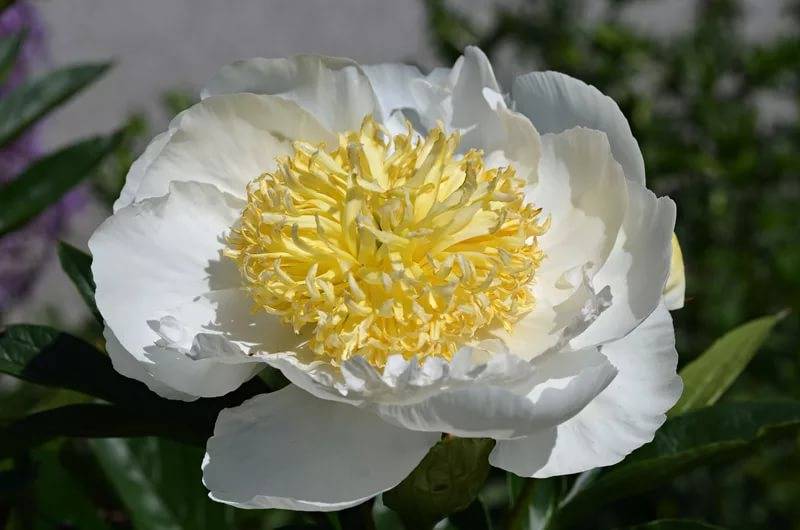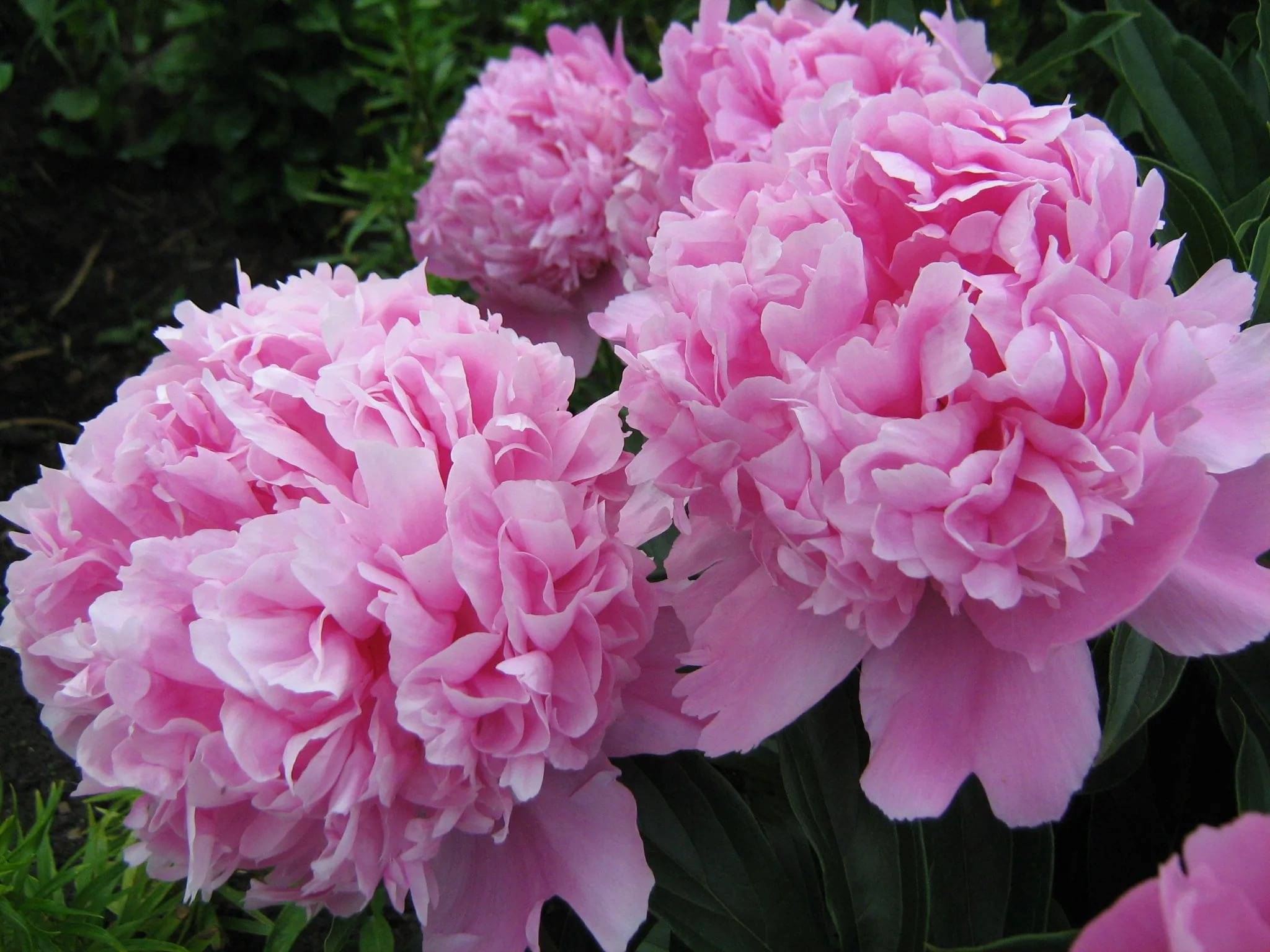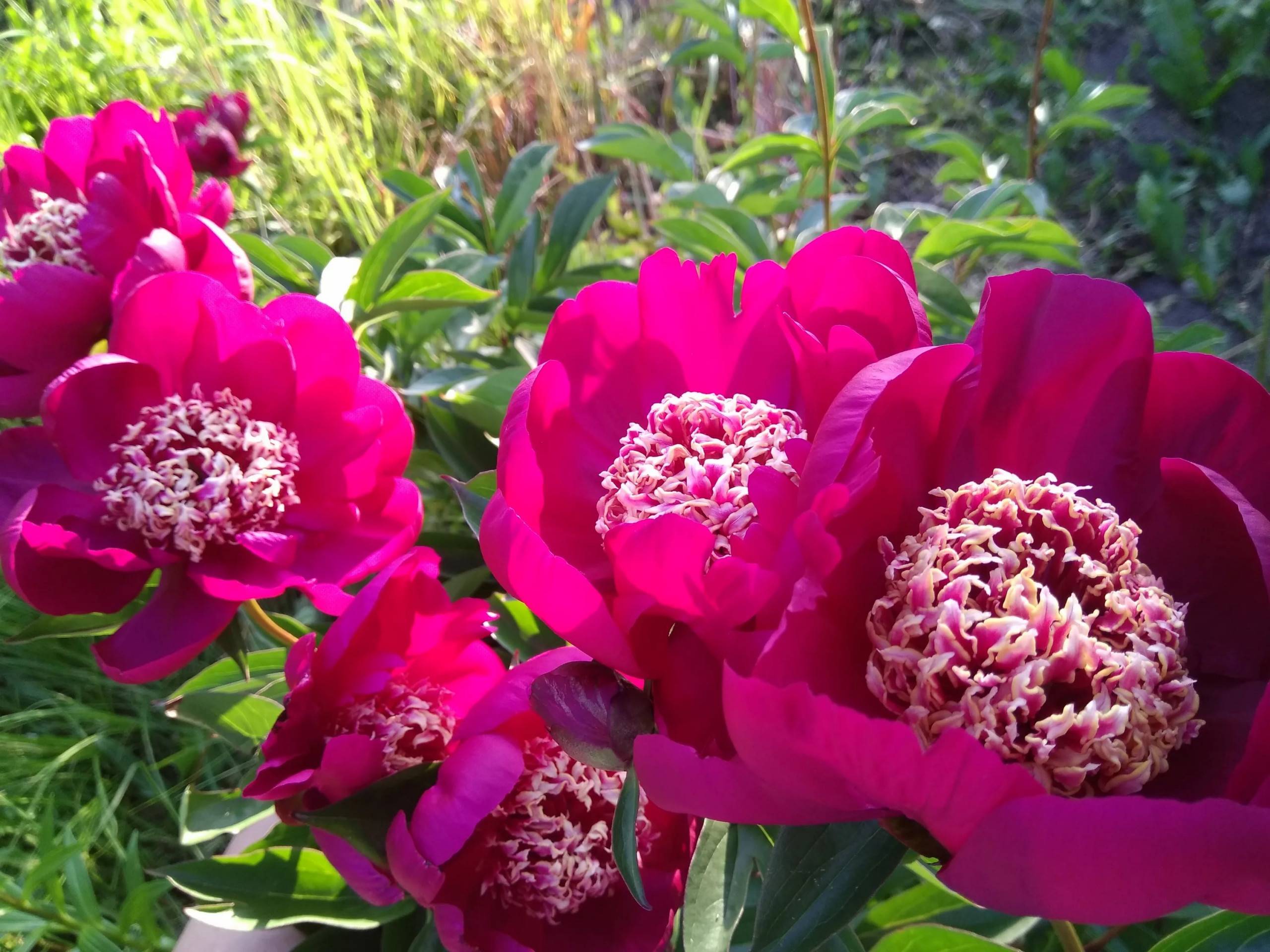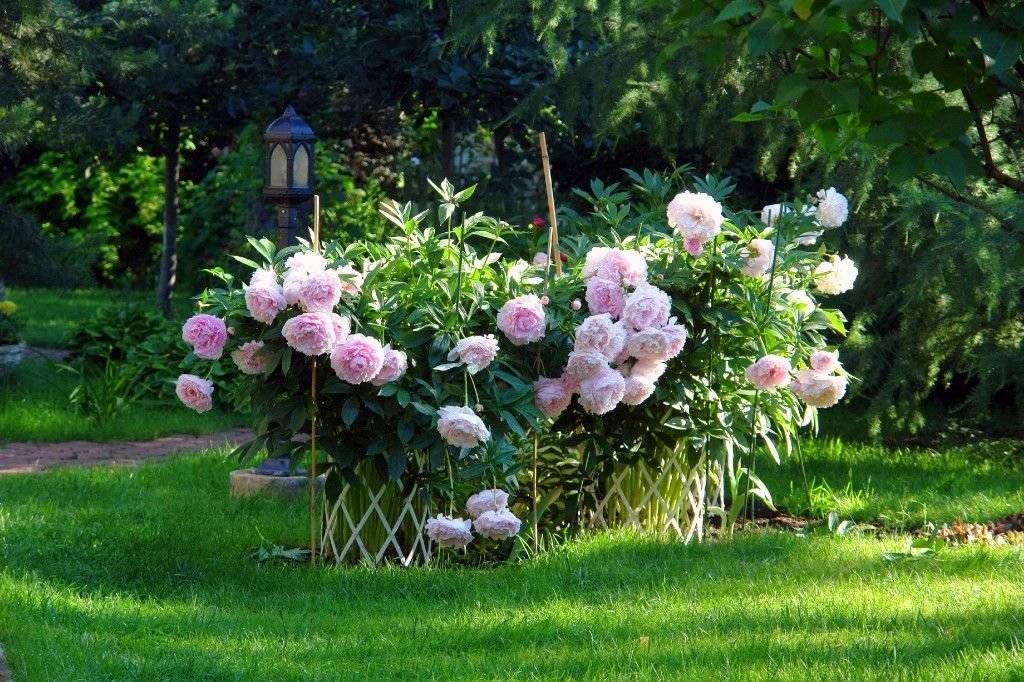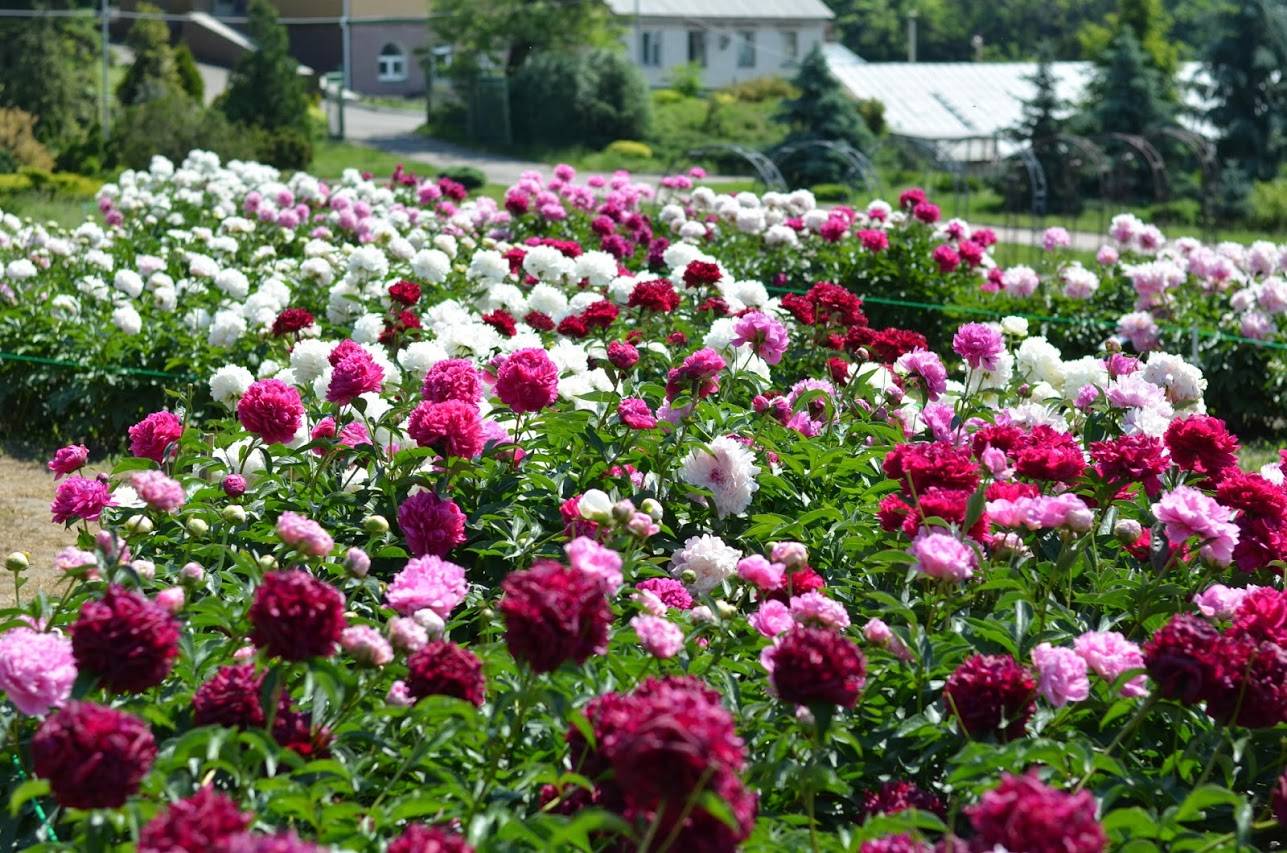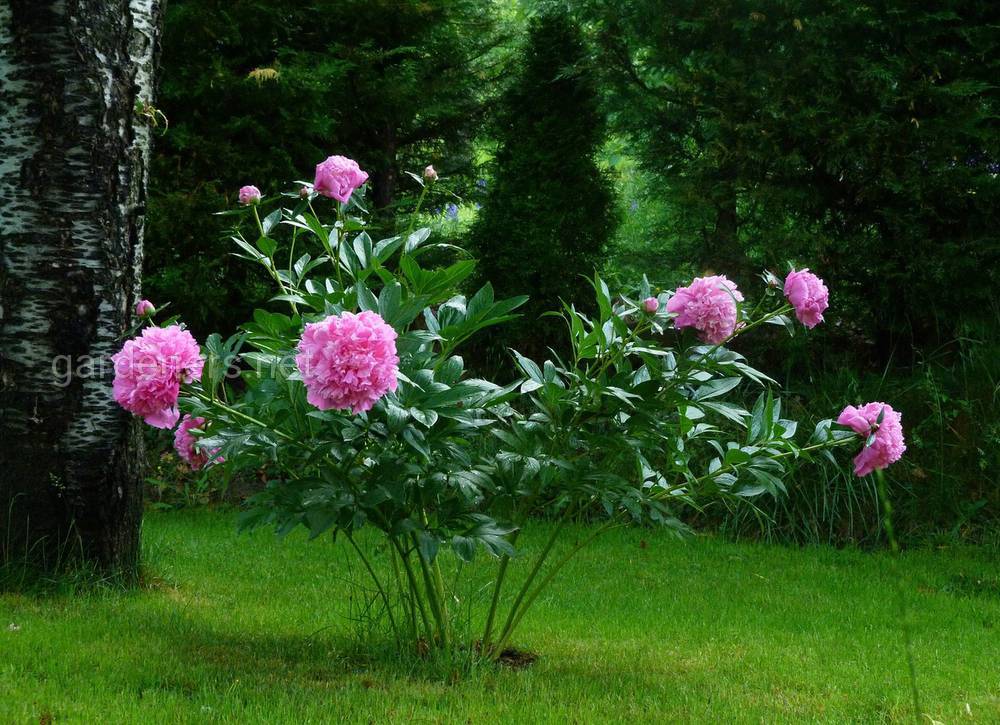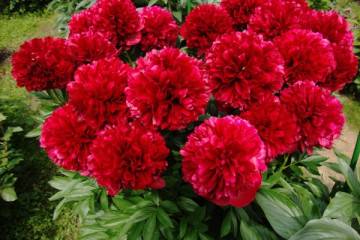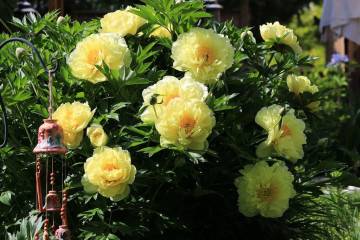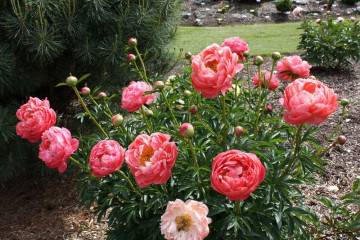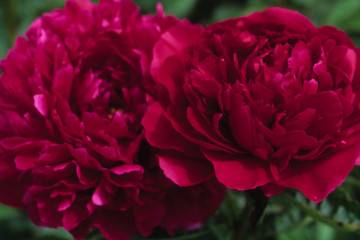Milk-flowered peony (Paeonia Lactiflora)
Content:
- Peony Milk-flowered (Paeonia Lactiflora) - what kind of peonies it is, the history of creation
- Classification of the species of lactic-flowered peonies
- The varieties most in demand among gardeners
- Growing a flower, how to plant it in open ground
- Milk-flowered varieties care
- Blooming lactic-flowered peonies
- Peonies after flowering
- Diseases, pests and ways to control them
Peonies, although not primroses, are associated with spring and warm weather in most regions. The earliest varieties bloom in mid-May. With a huge selection of colors, this plant is in great demand among landscape designers and bouquets. Milk-flowered peony - what kind of variety it is, where it grows.
Peony Milk-flowered (Paeonia Lactiflora) - what kind of peonies it is, the history of creation
Milk-flowered peonies are quite hardy, rarely get sick, look spectacular in the garden and in a bouquet.
Brief description, characteristic
Milk-flowered peony can be distinguished from other plants of this family by its compliance with the following parameters:
- roots of a brown shade, spindle-shaped;
- the stem is bare, reaches a height of 1 m, ends with 1-2 flowers;
- leaf plates have a lanceolate or elliptical shape, the tips are sharp, can be leaf-shaped or whole. Painted light green;
- the flowers are large, with a diameter of 8 to 16 cm. The buds are colored burgundy, red or pink. Regardless of the color, the stamens are always yellow.
It blooms annually, for almost a whole month, becoming a decoration of the garden.
Advantages and disadvantages of the view
There are more advantages to growing this variety of peony than disadvantages. The only drawback is the fragility of the stems. With a heavy downpour, they are bent to the ground; they cannot take a natural vertical position without assistance. The obvious advantages of cultivating lactic-flowered peonies (paeonia lactiflora) in the garden include:
- long growing period in one place (40-50 years);
- frost resistance (withstand temperatures down to - 40 degrees Celsius);
- immunity to most fungal diseases and pests.
Use in landscape design
Landscape designers use peonies to decorate flower beds and garden plots. The bush is easy to shape the way you want. By planting several shades of plants next to it, you can create a wonderful composition. Peonies go well with other flowers. The leaves of the faded plant also fit harmoniously into the surrounding landscape.
Classification of the species of lactic-flowered peonies
Peonies are classified according to the shape of leaves, flowers, purpose, depending on the method of growth.
Medicinal
The medicinal variety of the flower was previously grown to obtain the necessary medicinal ingredients, hence the name. But the excellent decorative qualities made this peony variety a frequent visitor to the garden flower bed. The buds are large, dark red, odorless, but they look very attractive, therefore they are often used to create bouquets.
Evading
Another name is "Maryin root". The stems are thickened, the flowers are dark pink, large - 13 cm in diameter. The arrangement of the buds is single.
Narrow-leaved
The plant looks good in a flower bed if it grows alone. The flowers are small, but there are many of them. The shade of colors is bright, crimson or red. Suitable for creating bouquets. It got its name from the shape of the leaves.
Tree-like
The tree-like shrub reaches a height of 2 m. This variety of peonies is divided into 3 groups: European, Japanese and hybrid (represented by hybrids of Yellow and Delaway peony).
Mlokosevich
Differs in the presence on each stem of several large yellow buds. The buds open very slowly, which prolongs the life of the cut bouquet.
The varieties most in demand among gardeners
Professional florists who grow plants not only for beauty, but also for sale, prefer peonies, which are distinguished by an abundant and long flowering period, a richness of shades.
Charm
The inflorescences of this peony are white or pale pink, semi-double. The buds, even at the stage of full disclosure, have almost no smell. Variety Ocharovanie blooms early, when others are just overgrown with green shoots. Abundant flowering can be achieved by planting the bushes in a well-lit area of the garden. The soil should be loamy.
Francois Ortegat
It has been cultivated for more than 1.5 centuries, since 1850. It is distinguished by the presence of 10-15 large flowers of a purple-red hue on each bush. Bushes are hemispherical, flowers are terry. The plant gives off a pleasant floral scent. Blooms in May-June.
Paul M. Wild
Double peony with huge burgundy or red flowers (18 cm in diameter). Refers to medium late herbaceous varieties.
Sword Dance
Peonies of this variety are characterized by a bright red color of the flower. The buds are large, reaching 20 cm in diameter, the petals are arranged in 1-2 rows. The lack of terry is compensated by a large number of buds on one bush,
Yellow
A short peony with large double or semi-double bright yellow flowers. The core may contain red impurities. The variety Yellow was bred in America, the buds exude a pleasant aroma. Poorly tolerates the transplant.
Red
This variety of red terry peonies was bred by American breeders back in the middle of the last century. The Red bushes are erect, but need a garter. The buds are huge, smell faintly, but the lack of smell is compensated by the appearance of the plant.
Carl Rosenfield
A variety with ruby or purple flowers. The bushes are high, up to 1 m in height. Terry buds, they give off a sweet aroma. Rosenfield belongs to the mid-late varieties, but it all depends on the region.
Nippon Beauty
Belongs to the Japanese group. The flowers are bright red, the leaves are dark green. It blooms profusely, the bush is covered with many buds. Late flowering variety.
Big Ben
Carmine-red buds cover the bush so tightly that no leaves are visible. Peonies almost do not smell, they can grow, both alone and surrounded by other plants. It blooms quite late, but belongs to the varieties of medium flowering periods.
Others
Such varieties are no less popular:
- Henry Boxtos;
- Sarah Bernhardt;
- Sorbet;
- White;
- Black beauty;
- Festival Maxim.
Their advantage is the bright color of the buds. The disadvantages of gardeners include, first of all, the possibility of burning out the buds in the sun. This is often found, for example, in peonies of the Henry Boxtos cultivar.
Growing a flower, how to plant it in open ground
Peony is not capricious.It quickly grows the root system, survives even in the most severe conditions. The main thing is to plant it correctly.
Planting by root cuttings
Only herbaceous varieties are propagated by cuttings. Cuttings are cut from healthy mature shrubs in spring or fall. You can get 2-3 cuttings from one stem if you cut it into pieces. The stem chosen for grafting should not bloom this year (therefore, autumn grafting is preferable). Further actions are as follows:
- grooves are made in the lower part of each cutting with a sharp knife;
- the place of the cut (an oblique cut should be obtained) and the groove is treated with a solution to stimulate root growth;
- choose a shaded place for planting, apply fertilizers for flowering plants;
- all cuttings are placed overnight in a solution that stimulates the development of the root system, this is necessary even after processing these parts of the plant;
- the stalk is stuck into the previously dug-up ground at an angle of 45 degrees, deepening it by about 4-5 cm.
What time is the boarding
Most often, peonies begin to be transplanted at the end of August, but if the summer is hot, then in September and even in October. Spring planting is also possible, but in this case, you will have to wait another 1 year for flowering.
Location selection
Peonies prefer areas that are well lit by the sun and do not tolerate close proximity. They should be planted on hillocks, at a distance of 15 cm from each other, when it comes to cuttings and 1-1.5 m, if an adult plant is transplanted to a permanent habitat.
How to prepare the soil and flower for planting
Before transplanting, remove all dried buds, cut the stems by 20-30 cm, it all depends on the height of the bush. Excess leaves are also removed, the soil under the bushes is abundantly moistened with water,
Planting procedure step by step
In order for the plant to take over, it is necessary:
- Choose a seat for landing.
- Dig a hole, no more than 15-20 cm deep.
- Pour water over it.
- Place fertilizer on the bottom.
- Place the roots of the plant in the hole, centering.
- Sprinkle with earth, deepening about 8-10 cm.
- Tamp the soil.
- Wait until the soil settles and pour more earth on top.
Planting with seeds (for breeding)
The appearance of the peony, first of all, the shade of the buds, is preserved only when dividing the bush or grafting. If a plant is grown from seeds, then no one guarantees that it will meet the declared varietal characteristics. Flowers are grown from seeds only for the purpose of further selection. This is difficult, and sometimes impossible, since not all peonies are capable of bearing fruit. Milk-flowered species have seeds, but there are very few of them, they do not germinate well, seedlings may appear 2-3 years after sowing.
Seeds must be stratified, kept alternately in warm and cold conditions, and only then sown. Even experienced flower growers do not always manage to do everything right.
Milk-flowered varieties care
Peonies are those plants that can be planted in the garden without worrying about caring for them. But there are times when the bushes still need supervision.
Watering and feeding
It is watered only in dry summers, when the air temperature rises daily to +30 and above degrees Celsius. Warm, settled water is suitable for irrigation.Watering rules are as follows:
- At a distance of 25-40 cm from the center of the bush, a deep groove is made in a circle.
- Water is poured into it, they wait until it is absorbed, the groove is filled up (during heavy rain, excess moisture can accumulate in it).
Watering frequency - once a week, in the evenings, after sunset. Peonies need moisture constantly, but especially at the end of May during the formation of ovaries and in August when the buds of renewal are laid.
Fertilize the bushes with liquid fertilizers for flowering, in the spring you can feed them with humus or ammonium nitrate. There can be 4 such dressings in total, including potash fertilizers and superphosphates.
Mulching and loosening
The soil under the bushes is loosened after the next watering or rain. This is necessary to supply oxygen to the roots. Deepen no more than 5 cm under the bush and 10 cm around it. Mulch the soil with humus immediately after applying top dressing or at any other time, but not often, 2-3 times per season.
Preventive treatment
Peonies don't get sick often, but if the summers are wet and cold or humid and very warm, then you should expect the appearance of gray rot or rust. For preventive purposes, plants are treated with fungicides. A specific substance can be recommended in a flower shop, but most often flower growers use Topaz or Vectra, treating plants with them once every 7 days.
Blooming lactic-flowered peonies
The flowering of peonies depends on the variety. There are very early, medium and late flowering plants. The first ones bloom in May, the last ones at the end of June. Some varieties bloom in July, they are considered very late.
A period of activity and rest
The first sprouts of peonies appear in April, by about mid-May the bushes are finally formed, ovaries appear on them. If the peony is early, then by the first days of June the buds will fade, after which the green shoots can be cut off. The peony goes to rest in September or October, by this time all life processes slow down and stop,
Care during and after flowering
Before flowering, the plants need to be fed; during the opening of the buds, the bushes often need a garter or support. If the summer is hot, you will also have to organize watering.
What to do if it does not bloom, possible reasons
If the peony does not bloom, it is possible:
- the earth is excessively wet;
- the soil is dry;
- the plant is young (in the first 2 years of flowering, it is better not to allow it at all);
- the bush is affected by disease or pests;
- the plant is planted in the shade (peonies love sunlight).
Peonies after flowering
Blooming peonies begin to prepare for winter,
Transfer
In August, plants can be dug up and transplanted to a new location, or by dividing, you can get several young bushes. The transplant is carried out until October. The principle is the same as when planting cuttings. The roots are buried no more than 10-20 cm into the ground. After transplanting, the plants are watered abundantly, the soil is mulched.
Pruning
After the end of flowering, the buds are cut along with the stems. No more than 15-20 cm of the previous size of the bush remains above the ground. Pruning can be done immediately or in the fall.
Preparing for winter
In September, potassium fertilizers and superphosphates are applied under the bushes. There is no need to cover plants for the winter. If the temperature does not drop below -40 degrees Celsius, the plants will not be affected.
Diseases, pests and ways to control them
Peony can be hit:
- rust. Brown or orange spots appear on the leaves, which can be removed by spraying the plants with a 1% solution of Bordeaux liquid and destroying the damaged parts;
- gray rot. The whole plant suffers, including the buds, is treated with fungicides, the bushes should be regularly sprayed with Bordeaux liquid;
- powdery mildew. Leaves are covered with a white bloom, which helps to get rid of "Figon".
Aphids often settle on peonies, ants arrange their homes under the bushes, the buds are affected by bronze, and the leaves are thrips.Plants are sprayed with "Formalin" and "Karbofos", they try to remove weeds from the beds in a timely manner, weed the soil under the bushes.
Peony is a beautiful plant that blooms mainly in spring. It is easy to propagate by cuttings and dividing the bush. If it rains periodically in summer, then you do not need to water. Top dressing is carried out at will. Fungal diseases and pests most often bypass the peony.

